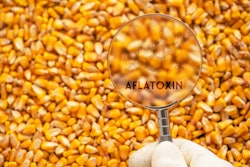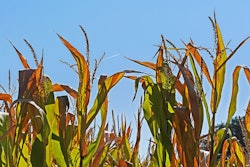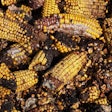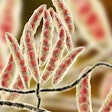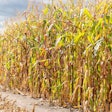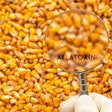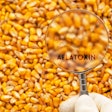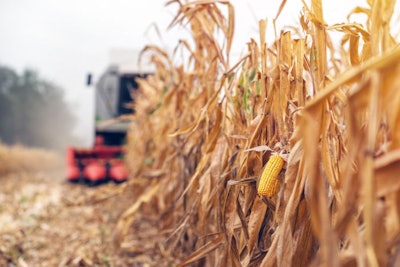
Mycotoxins can develop in crops throughout the growing season and must be monitored during harvest and at the feed mill.
Mycotoxins are caused by molds, and one kind of mold can cause several kinds of mycotoxins. Animals and humans can be affected by mycotoxins; they can be passed on to humans through milk, meat or eggs, and can result in various health problems, decreased production and mortality in all species.
There are many different mycotoxin-causing molds, and each one thrives in different growing conditions. This article explains the various molds and the mycotoxins they cause, and their ideal growing conditions, according to Alexandra Weaver, Ph.D., of the Alltech Mycotoxin Management team.

Aspergillus | Tyrannosaurus, Bigstock.com
Aspergillus | Tyrannosaurus, Bigstock.com
Aspergillus = aflatoxins
The mold aspergillus results in aflatoxins (B1, B2, G1 and G2). In the field, they thrive in dry and warm conditions, with the greatest aflatoxin production at 82 F. In grain storage, aflatoxins can develop with the presence of moisture, so adequate drying is essential.
Aspergillus = cyclopiazonic acid
Aspergillus also can create cyclopiazonic acid, particularly in the field during high temperatures and drought conditions, and with moisture presence during storage.
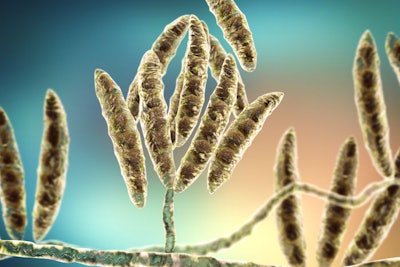
Fusarium | Tyrannosaurus, Bigstock.com
Fusarium | Tyrannosaurus, Bigstock.com
Fusarium = Type A trichothecenes
Fusarium causes several types of mycotoxins, one group of which is Type A trichothecenes including T2 toxin, HT-2 toxin and diacetoxyscirpenol (DAS). These mycotoxins grow best between 77 and 93 F and in moist conditions. They are influenced by weather conditions before and after flowering.
Fusarium = Type B trichothecenes
Fusarium causes Type B trichothecenes known as deoxynivalenol (DON) and grows during cool and wet growing seasons. According to Weaver, rain two weeks prior to flowering causes the release of mold spores, rain during flowering helps mold establish on the grains, and rain right after flowering helps the mold spread between kernels. Fusarium is influenced by the presence of insects, fungicide use and hybrid type.
Fusarium = fumonisins
Fusarium can lead to the formation of fumonisins (B1, B2 and B3), and likelihood is increased during periods of drought around the flowering stage, followed by moisture and warm temperatures prior to and around harvest time.
Fusarium = zearalenone
Fusarium can also lead to the development of zearalenone (ZEA). Weaver said ZEA is influenced by many factors, including temperature, growth period length and substrate. The highest ZEA production occurs in cool conditions, below 77 F.
Fusarium = fusaric acid
Fusarium can also lead to the development of fusaric acid, but there is little information available about its ideal growing conditions.
Ochratoxins = ochratoxins/citrinin
Ochratoxin molds can lead to the mycotoxins ochratoxin (OTA) and citrinin. Ochratoxins form during high water activity regardless of temperature, but optimum production occurs between 77 and 86 F. Citrinin forms at temperatures between 68 and 86 F and water activity between 0.75 and 0.85.
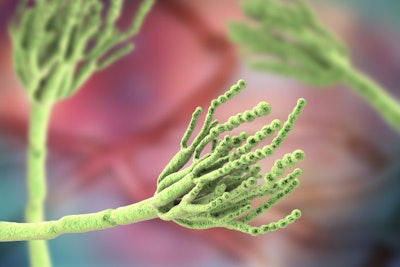
Penicillium | Tyrannosaurus, Bigstock.com
Penicillium | Tyrannosaurus, Bigstock.com
Penicilliums = patulin/penicillic acid/citreoviridin
Penicilliums lead to the formation of several mycotoxins, including patulin, penicillic acid and citreoviridin. In the field, they form during heavy rains, with optimum temperatures between 75 and 88 F. In storage, toxins can grow at a wide temperature range (40 to 88 F), a wide pH range (2-10) and low oxygen percentage.
Claviceps = ergot toxins
Claviceps mold creates ergot toxins, particularly on rye and other grasses like wheat and barley. The toxins grow at a wide range of temperatures (41 to 100+ F), but optimal temperatures are between 68 and 86 F. Ergot toxins are promoted by a prolonged flowering period. Weaver says lower temperatures increase ergot susceptibility — an average minimum temperature below 54 F, 23-27 days before flowering, reduces pollen viability and predisposes crops to ergot infection. Cool, wet weather during floret opening, flowering and fertilization increases ergot development. Moderate temperatures (57 to 82 F) with high humidity increases the toxin’s spread.


